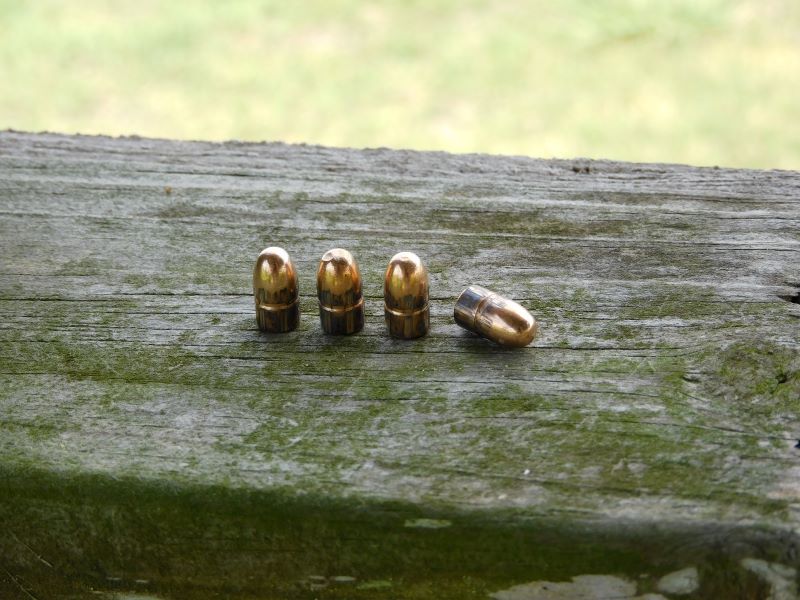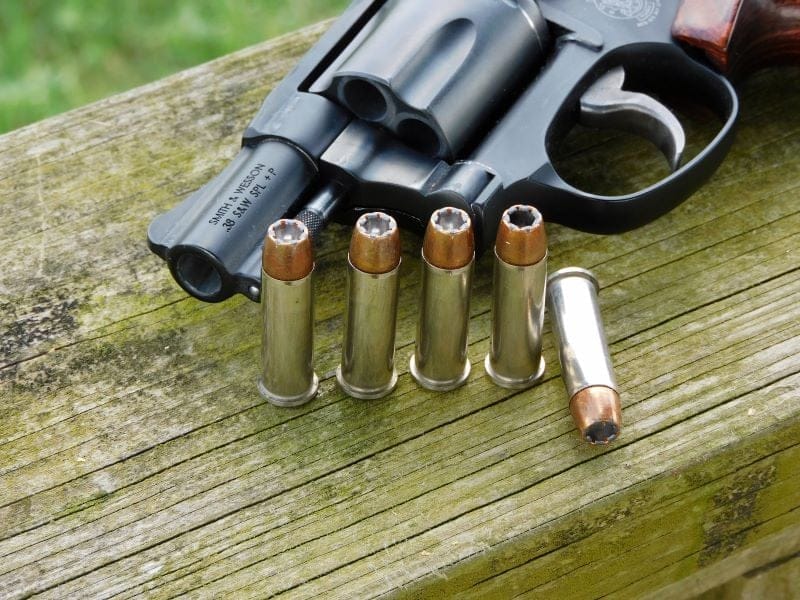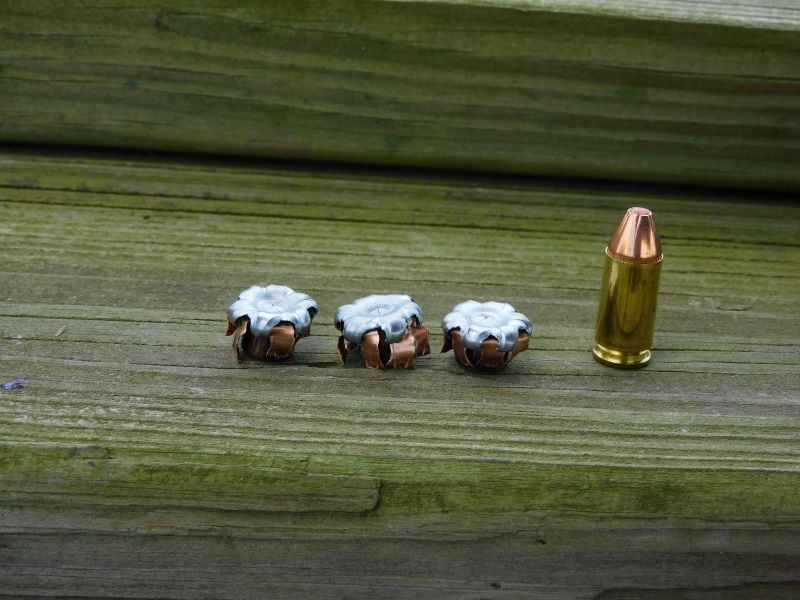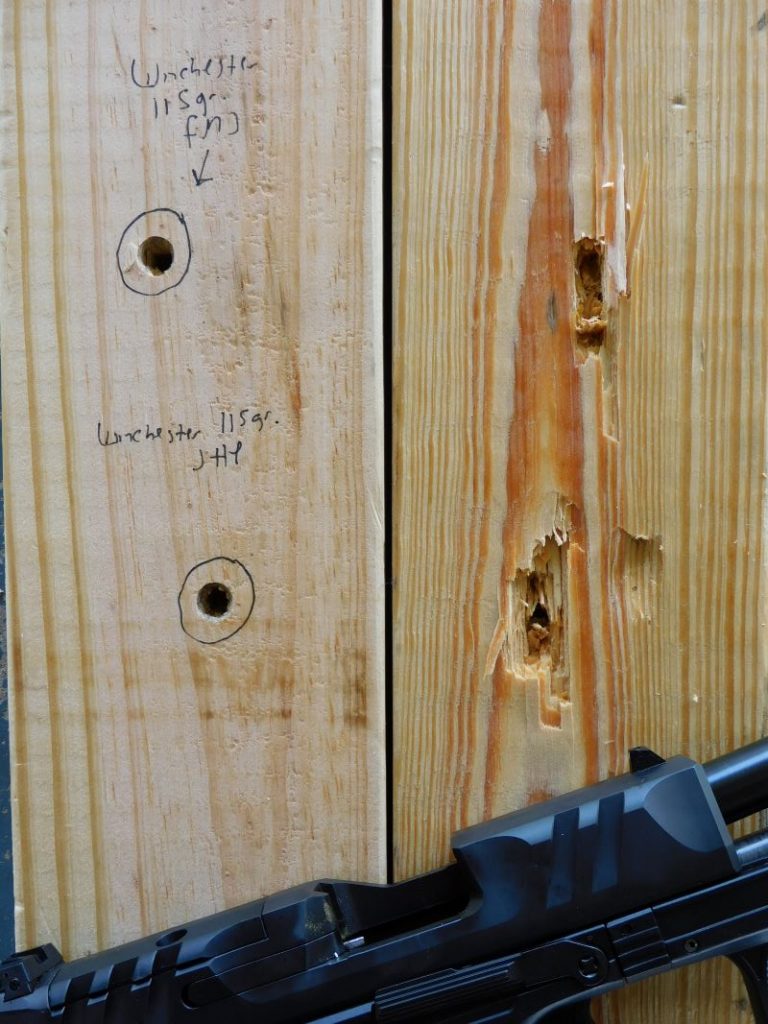When you use a rifle, a shotgun, or a handgun for any purpose, ammunition selection is critical. Rounds that excel at punching paper or busting clays are seldom optimal for game hunting or personal protection. But when it comes to handgun cartridges, there are a surprising number of exceptions despite there being only two common bullet choices: full metal jacket or hollow point.
Most will say that non-expanding full metal jacket ammunition is great for range work but it is ill-suited for protection. Hollow-point ammunitions are probably going to be the load recommended for personal defense. For more handgun carriers in most situations, this is sage advice. But that does not make full metal jacket ammunition worthless. Follow along as we explore the ballistics of full metal jacket and hollow point ammunition to determine which might be best for you.
Full Metal Jacket
Full metal jacket, otherwise known as ball ammunition, chiefly refers to a nonexpanding projectile that consists of a lead core entirely covered by a copper jacket. Full metal jacket is not the only solid, nonexpanding round, though. Plain lead bullets without any hollow point cavity have similar characteristics. Some loadings of older rounds like .38 Special or .45 Colt can be found with a round-nosed lead or wadcutter bullet. Although these soft lead bullets can deform when hitting hard objects, they have no other expansion mechanisms.
The full metal jacket load lacks a hollow-point cavity in the front of the projectile, which inhibits expansion of the lead core. The jacket protects the core from damage as it impacts the target and ensures the core does not melt as it goes down the barrel when the round is fired.

While most full metal jacket bullets consist of a copper jacket and a lead core, this is not always the case. Eastern European military surplus ammunition and commercial handgun ammunition makers like Tula often use a steel core over a copper jacket, while some FN 5.7x28mm rounds use an aluminum core.
Most full metal jacket pistol ammunition has a round-nosed profile for easy feeding, but flat-point and spire-point profile ammunition is also available.

Hollow Point
In times past, full metal jacket and round-nosed lead bullets were the go-to projectiles, but in medium-caliber handguns like 9mm Luger or .38 Special, these kinds of ammunition tended to penetrate too much and do too little damage to immediately incapacitate determined opponents. In the 1970s, hollow point ammunition came on the scene as a way to address these problems.

Hollow point ammunition consisted of a jacketed or non-jacketed lead bullet with an exposed cavity on the frontal section of the projectile. When a hollow point strikes its target, the cavity and the projectile mushrooms are flattened to a larger diameter.
Hollow-point bullets are designed to have more drag on the target and impart more damage but less penetration.
Most hollow point ammunition will use a lead core bonded to a brass or copper jacket, but there is plenty of variation. Some, like the Hornady FTX, feature a polymer plug in the hollow-point cavity. The original all-lead hollow point round is still with us in calibers like .38 Special, .44 Special, and .45 Colt. Some makers like Double Tap, Barnes, and Leigh Defense, specialize in non-toxic all-copper solids and hollow points.

How Hollow Points Beat FMJ
Winchester found success at the end of the 1970s with the introduction of the Silvertip line of defensive hollow points. Fast forward to 1991, when Winchester introduced an improved line called the Black Talon. Almost immediately, the Black Talon, with its ominous-sounding name, developed a reputation for deadliness. It was also incorrectly reported to be lubricated with Teflon, allowing the round to penetrate through Kevlar vests worn by police officers. Due to the bad press, Winchester suspended the commercial sale of the Black Talon in 1993, although it eventually made a comeback by another name.
Since the Black Talon controversy, hollow points have been viewed by the general public as an especially deadly projectile compared to other types of ammunition. Certainly, if we see retrieved projectiles from controlled tests, we could come to that conclusion. A properly designed hollow point will expand to a greater diameter than the projectile loaded into the case. That greater surface area does increase the chances of the projectile hitting something important. The drag on the hollow point projectile induced by muscle tissue and bone as it opens up can also limit penetration so that more of that round’s kinetic energy is expended in the target.
While all of these features of a hollow point sound devastating and give the self-defender greater safety when faced with a determined attacker, these same attributes may make the hollow point a safer round for the attacker as well.
Compared to rifle and shotgun rounds, most handgun cartridges are underpowered and low velocity by comparison. Most fatalities from handgun rounds are due to blood loss, except for an anatomically significant hit to the head or central nervous system. Thanks to modern medicine, most handgun wounds are survivable. But modern hollow points might play a role as well.
If a hollow point bullet works as intended, it will dump most of its energy into the given target without overpenetration. This reduces the chances of collateral damage but also reduces the number of holes in the intended target. Hollow points increase the odds of incapacitating a target while incidentally reducing blood loss, whereas it would take more full metal jacket projectiles to get the desired effect but result in greater blood loss and more entrance and exit wounds that emergency responders must contend with.
How FMJ Beats the Hollow Point
For personal protection, a good hollow point load is a safe bet. But it is not the be-all-and-end-all round. There are a few good reasons to opt for a full metal jacket or lead round-nosed bullet instead. The rationale falls into two thought camps. First, there may be circumstances where more penetration is necessary. Second, there are even more circumstances in which hollow points can fail to work as advertised.
Personal defense is not strictly bound to two-legged predators. Four-legged predators with tougher hides and thicker bones require tougher projectiles where a hollow point might break apart and stop short of getting the necessary penetration needed to hit something vital. Various types of full metal jacket and hard-cast lead bullets are popular for wilderness defense because they can stand up to the punishment.
Although bears and moose constitute our most formidable opponents, the most likely threats are from people. For the threats we usually face, there is still a case to be made for FMJ. Some concealed carriers will mix and match FMJ and JHP rounds in the magazine of their carry pistol or carry a magazine full of FMJ rounds in addition to what is loaded into the pistol. This is done in the event that the defender needs more penetration through hard barriers like shelves and furniture, which might slow down or stop a hollow point.

Outside typical duty or service calibers, full metal jacket ammunition may be the only viable option. Hollow points in particularly weak cartridges can produce a mixed bag of results. Hollow points rely on bullet velocity to work as advertised. If you are armed with a pistol with a particularly short barrel or an inherently low-velocity cartridge, the results can be a mixed bag.
The .25 ACP is an archetypical low-velocity cartridge. It fires a 50 grain FMJ round at about 750 feet per second, which produces acceptable penetration. But this round is not so powerful that the FMJ has too much penetration. Over the years, ammo makers have tried to make an acceptable hollow point load. These rounds use a lighter 35 grain bullet to get more velocity, but even so, these rounds often fail to expand or penetrate enough to compete with FMJ. Occasionally, some ammunition will expand and give very little penetration.

The .22 LR, .32 ACP, .380 ACP, and standard-pressure .38 Special hollow-point loads all suffer from this phenomenon to some degree. The picture improves remarkably with .38 Special +P and standard pressure 9mm Luger ammunition, where good penetration and expansion are more consistent. Yet even the warmest hollow point load pushed at high velocity has to contend with all manner of fabric and bone, which can affect performance in varying ways.

The Bottom Line
When the experts say to dispense with full metal jacket ammunition if you are serious about personal defense, they are not lying to you. Rather, it is generally sound advice with some notable exceptions. For most of us, a good hollow point is best against the threats we are most likely to face. Their balance of penetration and expansion allows for quicker incapacitation of the intended target with fewer rounds, reducing harm to the defender, innocent bystanders, and potentially the aggressor as well.
But there are situations where full metal jackets are called for. Some older handguns are designed to cycle ball ammunition and may not function reliably without it. FMJ and other nonexpanding rounds also excel at barrier penetration and on anatomically tough critters. Likewise, full metal jacket rounds may be the only viable option in pocket pistol calibers where hollow points fail to deliver. Depending on what situation you find yourself in, it is useful to think of full metal jacket as something with uses beyond the range.

